Automation Integration
Automation is a key driver of shipping efficiencies. However, automation that is not integrated creates pain points for both the shipper and carrier as the flow of information (and therefore the process of shipping itself) becomes fragmented.
Our client – a global transportation provider – is struggling to increase the adoption of automation integration and wants to more fully understand the fundamentals of integration from both the shipper’s and the developer’s points-of-view. Moreover, the client wants to pressure test different models for integration and ultimately determine how an online, self-service solution would impact engagement.
We first spoke with key stakeholders to fully understand the scale and scope of this initiative including what they wanted to learn. Qualitative and quantitative research followed to define the integration landscape for shipping. Lastly, we interviewed developers to determine how their voices impact these decisions and the speed and effort required for automation integration.
We identified key benefits and barriers to automation integration for shipping and sized the market across different models of integration, including the level of effort and support required for each. In addition, we provided clarity around third-party solutions in this space, and the viability of an online integrated solution.
The framework that emerged set the stage for integration strategy moving forward. Online integration tools were introduced, and still generate strong results and efficiencies.


